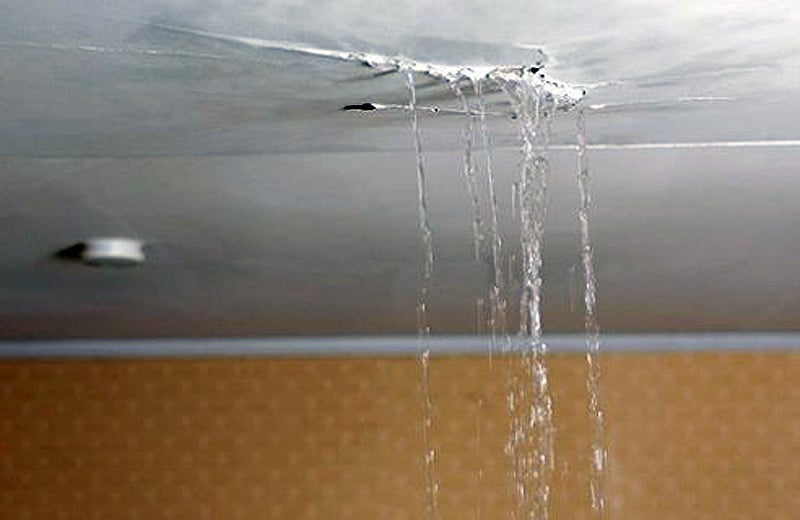Tackling the Six Most Common Water Leaks: Tips for Homeowners
Tackling the Six Most Common Water Leaks: Tips for Homeowners
Blog Article
What're your opinions on Common Water Leaks In House?

Leaks not only trigger waste of water however can also create unneeded damages to your residence as well as promote undesirable organic development. Regrettably, water leakages may go unnoticed since a lot of the pipework in our house is hidden. By looking and also comprehending for daily situations that create leakages, you can shield your house from future leaks and unnecessary damages. Today, we will certainly consider six leakage triggers that might be creating your pipelines to trickle.
Elbowing in roots
Most water leakages begin outside your house instead of inside it. If you see an unexpected decrease in water pressure, claim in your tap, take time to head out and analyze your backyard. You may see wet patches or sinkholes in your lawn, which might suggest that tree roots are getting into water lines causing water to leak out. You can have your plumber check for invasion, specifically if you have trees or bushes near your residential or commercial property.
Rusty water supply
As time passes by, your plumbing system ages and rust such as corrosion may start eating away the pipes. This might be the root cause of staining or bending on your water pipes. This requires an examination with your plumber right away. If our plumbing system is old, consider changing the pipelines since they are at a higher danger of rust than the more recent versions.
Malfunctioning Pipe Joints
The point at which your pipes link is often the weakest web link in the waterline. Pipeline joints can deteriorate with time, resulting in water leaks. However, most of pipeline joints are not conveniently noticeable. If you have loud pipes that make ticking or banging noises, particularly when the warm water is switched on, your pipe joints are probably under a lot of pressure. It is suggested to have your plumber evaluate your system once a year.
Instant temperature adjustments.
Extreme temperature level adjustments in our pipelines can cause them to expand as well as contract all of a sudden. This growth and also contraction might create splits in the pipelines, specifically if the temperature are below freezing. It would be best if you kept an eye on how your plumbing functions. The existence of the previously stated scenarios often shows a high danger.
Poor Water Connectors
At times, a leak can be caused by loose tubes as well as pipelines that supply your home appliances. In case of a water connections leakage, you may see water running straight from the supply line or pools around your appliances.
Clogged Drains
Obstructed drains might be aggravating and inconveniencing, but they can occasionally wind up triggering an overflow causing rupture pipes. Keep removing any type of products that may decrease your drains that could obstruct them to prevent such aggravations.
All the above are root causes of leakages however not all water leakages arise from plumbing leakages; some leakages could originate from roof covering leaks. All leaks should be repaired promptly to stay clear of water damages.
Leaks not only cause waste of water however can likewise trigger unnecessary damages to your house and also advertise unwanted organic development. By recognizing and also looking for day-to-day situations that create leaks, you can shield your house from future leakages and unnecessary damage. Today, we will look at 6 leak causes that might be creating your pipelines to trickle.
At times, a leakage can be caused by loose hose pipes and also pipelines that provide your devices. In case of a water connections leakage, you might see water running directly from the supply line or pools around your appliances.
How To Check For Water Leak In Your Home
How To Check for Leaks
The average household's leaks can account for nearly 10,000 gallons of water wasted every year and ten percent of homes have leaks that waste 90 gallons or more per day. Common types of leaks found in the home are worn toilet flappers, dripping faucets, and other leaking valves. These types of leaks are often easy to fix, requiring only a few tools and hardware that can pay for themselves in water savings. Fixing easily corrected household water leaks can save homeowners about 10 percent on their water bills.
To check for leaks in your home, you first need to determine whether you're wasting water and then identify the source of the leak. Here are some tips for finding leaks:
Take a look at your water usage during a colder month, such as January or February. If a family of four exceeds 12,000 gallons per month, there are serious leaks.
Check your water meter before and after a two-hour period when no water is being used. If the meter changes at all, you probably have a leak.
Identify toilet leaks by placing a drop of food coloring in the toilet tank. If any color shows up in the bowl after 10 minutes, you have a leak. (Be sure to flush immediately after the experiment to avoid staining the tank.)
Examine faucet gaskets and pipe fittings for any water on the outside of the pipe to check for surface leaks.
Undetected water leaks can happen without the home or business owner even realizing. If you suspect a water leak, but not able to find the source. It is time to contact a professional water leak detection service, The Leak Doctor.
How To Find a Water Leak In Your Home
https://www.leakdoctor.com/blog/How-To-Check-For-Water-Leak-In-Your-Home_AE197.html

We hope you enjoyed reading our part on How Fast Water Damage Can Ruin Your Home. Thank you for taking a few minutes to read through our blog. Feel free to take the opportunity to distribute this blog if you enjoyed it. Thanks a lot for your time spent reading it.
Book 24/7 Report this page